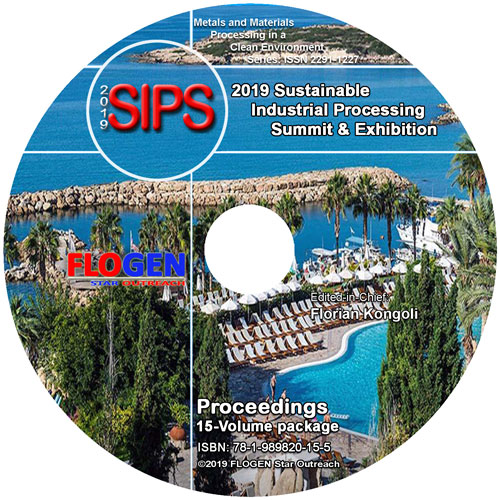2019-Sustainable Industrial Processing Summit
SIPS2019 Volume 8: Usui Intl. Symp. / Advanced Sustainable Iron and Steel Making
| Editors: | F. Kongoli, P. Assis, M.C. Gomez-Marroquin, S. Kitayama, H. Konishi, A. Murao, S. Nomura, H. Ono, H. Saxen, K. Seto, J.I. Tani |
| Publisher: | Flogen Star OUTREACH |
| Publication Year: | 2019 |
| Pages: | 250 pages |
| ISBN: | 978-1-989820-07-0 |
| ISSN: | 2291-1227 (Metals and Materials Processing in a Clean Environment Series) |

CD shopping page
Application of Multi-stage Zone Reaction Model for Agglomerates to Blast Furnace Analysis
Masaaki Naito1;1NIPPON STEEL TECHNOLOGY CO., LTD., Futtsu, Japan;
Type of Paper: Keynote
Id Paper: 429
Topic: 2
Abstract:
It is important to evaluate the reduction behavior of agglomerates as well as permeability for Blast Furnace analysis. Generally, rate-parameters of an agglomerate is used for several BF analysis. But, sinter has a different porosity in a different particle size. In radius direction of a blast furnace top, sinter particle size is different by burden distribution control. And also, sinter particle size changes by reduction degradation in a low temperature region of BF. In the high temperature region over 1100â—‹C, porosity of sinter decreases by melt formation inside of sinter. It is needed to consider the change of particle size and porosity by above phenomena in the BF analysis
Here, Multi-Stage Zone Reaction model (MSZR) is used for analyzing the reduction of agglomerates. How to evaluate the rate-parameters is considered and the influence of agglomerate quality is analyzed.